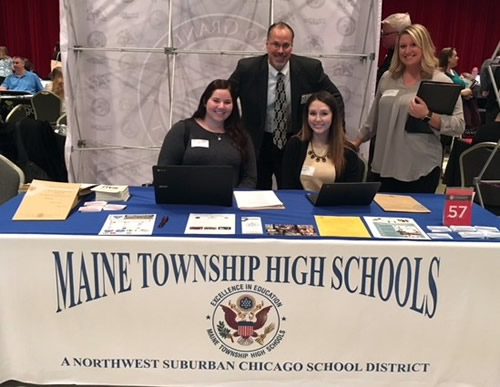Savvy school districts are starting to harness the cost and time-efficiency benefits that video interviewing platforms provide to make faster, cheaper, and smarter hiring decisions. The key feature of any video interviewing platform is what is referred to as the one-way, on-demand, or asynchronous, video interview.
Here’s how it works:
• First, the district invites candidates to complete a video interview within a given amount of time, usually three to five days.
• Using their smartphone or any webcam-equipped device, candidates will view a welcome message about what it’s like to work for that particular school district. (Many school districts already have recruiting or promotional videos that serve as great welcome messages.)
• Next, the candidate is asked some interview questions by an administrator or—at my district—a student, and then has time to record a video response for each question. We’ve found that candidates are more at ease when they see and hear students asking them the interview questions.
• The interview ends with a goodbye message, which could be a video or text with next steps and an estimate of the timeline for completion of the selection process.
(Next page: How video interviewing platforms let my district make faster, cheaper, and smarter hiring decisions)
The benefits of using video interviewing
By incorporating a one-way video interviewing strategy into the teacher selection process, school districts can attract and screen more candidates for each open position. In fact, research from the Aberdeen Group shows that school districts can complete 10 video interviews in the time it takes to complete just one telephone-screening interview.
Even after spending big bucks for online psychometric assessment tools with predictive analytics that help schools decide who to bring in for an interview, many administrators still find themselves interviewing some candidates for up to 60 minutes—even when they knew the candidates were not a fit after the first few questions were answered.
With one-way video interviews, an administrator can skip to the next response as soon as they hear what they want to hear or fast-forward to the next candidate’s interview as soon as they realize a particular candidate doesn’t have the necessary “teach factor” they need. In addition, one-way video interviews can be reviewed by multiple decision-makers from anywhere in the world and at any time. No longer do schools have to put off scheduling interviews because the building principal is out of the building.
How it works for my district
Recently, my district conducted a search for a career and college admissions specialist and received more than 120 applications. We invited 87 applicants to a one-way video interview as our first-round screener.
Within five days, we received 79 completed video interviews for each member of our 11-person selection committee to evaluate. From there, we invited 16 semifinalists to complete an eight-question second-round video interview and received completed interviews from all 16 semifinalists within three days.
After our selection committee assessed those responses, we invited nine candidates to do in-person interviews. Without one-way video interviewing, how could an 11-person selection committee interview more than 90 percent of the qualified applicants for a particular position?
Using video interviewing to screen upwards of 90 percent of all qualified job applicants means school districts can make smarter hiring decisions and increase their employee retention rate. This, in turn, saves the district money associated with recruiting, selecting, onboarding, and training new employees.
In just eight calendar days my district completed 79 first-round interviews and 16 second-round interviews, and none of the 11 committee members left their offices or classrooms to evaluate the candidates’ responses. We did not incur any costs for substitute teachers, travel expenses for out-of-state candidates, or meal costs for our interview team. Simply put, video interviewing allows school districts to interview more candidates and hire faster than districts who use traditional teacher selection processes.
Research shows that the average amount of time needed to fill a teaching position is 42 days. Also, of those candidates who rejected a district’s job offer, nearly 50 percent rejected it because they had already accepted another offer! Video interviewing strategies give school districts a leg up on their competitors who may have richer salary schedules but are late to the game in terms of offering jobs to the top candidates.
Personally, having implemented video interviewing technology roughly 18 months ago, going back to the traditional methods to screen candidates would be akin to committing educational malpractice. We’ve dramatically increased both the amount and diversity of applicants who apply for our open positions, and we’ve interviewed more candidates from more states than ever before. In addition, video interviewing allows candidates to showcase their soft skills better than what a paper resume can convey.
Charles Darwin believed that a species must adapt to changes in its environment to avoid becoming extinct. As a result of decreased school funding and the nationwide teacher shortage, school districts are using video interviewing technology to enhance their talent acquisition processes and make faster, smarter, and cheaper hiring decisions.
- 4 ways to encourage play in education - April 25, 2024
- CoSN IT Leader Spotlight: Lisa Higgins - April 25, 2024
- It’s time to pay student teachers - April 25, 2024


